3D Laser Scanning Delivers Precise As Built Data for the Installation of an LED Video Display at The Lloyd Noble Center
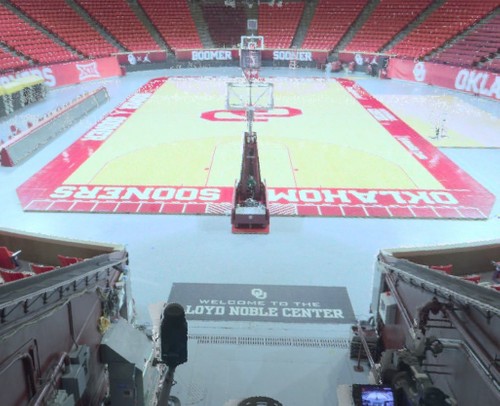
3D laser scanning documented the retractable awning and the area surrounding the player’s entrance tunnel to install a LED video display.
The Installation of LED Video Displays Requires Precise Engineering
The sports industry is upgrading stadiums and arenas with LED video displays to enhance fans’ experience, build excitement, and create state-of-the-art athletic complexes. Adding LED video technology is a large capital expenditure that requires considerable planning and execution.
The Lloyd Noble Center, home to The University of Oklahoma men’s and women’s basketball teams, was adding a new LED video display over the top of the player’s entrance tunnel. The LED video display is one of a number of planned improvements to the aging Lloyd Noble Center. Additional updates will soon join it so that Sooners players and fans can experience college basketball at its finest.
The 11,528-seat arena was constructed in 1975 and sits 1.5 miles from The University of Oklahoma. The existing building was being renovated by an architectural firm to modernize the space and increase fan engagement. The video display project will communicate game information, share live video and instant replays, and generate revenue for the arena with sponsorship opportunities.
Once the LED display package is designed and manufactured, proper installation becomes the focus of attention. The structural engineering of these large-scale displays is critical to ensuring the physical safety of players, fans, workers, and anyone who enters the facility. Design planning from accurate as built site conditions will ensure that the system will be precisely installed and prevent miscommunication, risks, delays, and unexpected issues.
The successful installation of the LED video display required many people working together, just like a sports team, to get the job done. Coordination between the display manufacturer, structural engineers, and the installation crew was necessary to ensure the LED video display was securely installed. The placement of the screen was in a very high-traffic area, hanging right above the player’s entrance.
Exact As Built Details Captured for Structural Engineering
The general contractor hired by the University has completed hundreds of video display installations across the United States and brought GPRS in to capture the exact details and dimensions of the player’s tunnel to plan the structural steel support, anchor points, and electrical tie-ins. The GPRS Project Manager used 3D laser scan technology to quickly document the existing conditions of the player’s tunnel in the form of a point cloud, capturing precise structural details.
Cole Dickson, Project Manager at GPRS said, “This client called me during the March Madness tournament. I couldn’t have asked for a more appropriate time to work on this project.
“The main focus for this project was documenting a retractable awning and the area surrounding the player’s entrance tunnel. Our client was planning to replace an awning with a retractable LED screen,” said Dickson.
The massive video display weighed thousands of pounds and was suspended over the players entrance tunnel and court. The installation of the LED video display required precise structural and safety engineering. The accurate as built data GPRS provided was used to plan the engineering of the mounting structure and connection points. It was important for the general contractor to have a design plan documented for the crews to follow with strict safety and installation procedures.
Michelle Colella, Mapping & Modeling Manager at GPRS is passionate about providing precise engineering data to clients, “because you don’t want to mount an LED video display that weighs thousands of pounds to an awning that has not been analyzed. Once the display is mounted, it’s much harder to detach it to remedy any structural or safety issues.”
3D laser scanning captured the basketball arena with 2-4mm accuracy, a very high level of detail for structural planning. The Leica RTC 360 laser scanner was used on site for high-speed data capture. With a measuring rate of up to 2 million points per second and advanced HDR imaging system, the creation of colorized 3D point clouds was completed in less than two minutes per scan location. Automated targetless field registration and the seamless transfer of data from the site to the office expedited this project for our client.
The point cloud data collected can be transformed into 2D CAD drawings, 3D BIM models, 3D meshes, TruViews, and virtual tours of the highest quality standards.
Designs created from the as built data, drawings, and models can be easily shared to improve project communication and collaboration. Our client can proceed with confidence knowing that everyone is working from accurate data and the same set of plans.
Why Choose Us? The GPRS DIFFERENCE.
GPRS 3D laser scanning services provide accurate data for design engineering. Whether you are renovating aging stadiums or arenas or adding technological improvements, exact building dimensions and site information is critical to your decision making. GPRS offers a consultative approach to project management, working with you to ensure the data we deliver is the perfect solution for your project. The point cloud data captured is accurate within millimeters and can be processed into custom 2D CAD drawings and 3D models at any level of detail.
The LED video display installation at The Lloyd Noble Center is just one example of the many advanced engineering projects GPRS has completed since 2001. When you hire GPRS 3D Laser Scanning, you are hiring the most accurate data collection experts in the business who will get the job done right – and fast – the first time.
Learn how GPRS 3D Laser Scanning Services can help you streamline your next project to Intelligently Visualize Your Built World™.
What can we help you visualize?
Call GPRS today at 419-843-7226 or email laser@gprsinc.com for 3D laser scanning services on your next project.
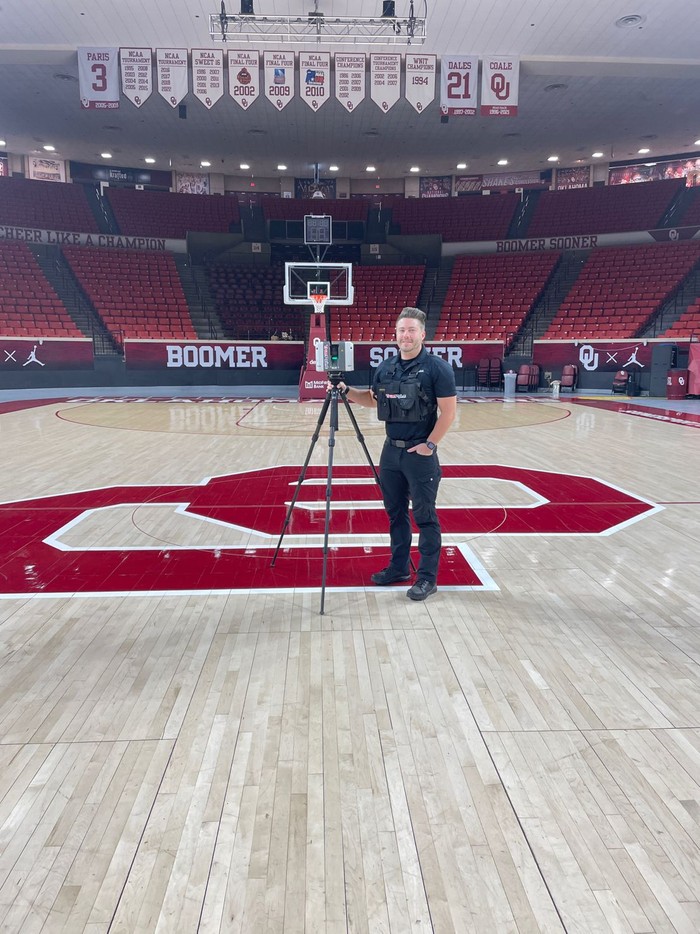
GPRS provided laser scanning services at The Lloyd Noble Center to document the retractable awning and the area surrounding the player’s entrance tunnel.
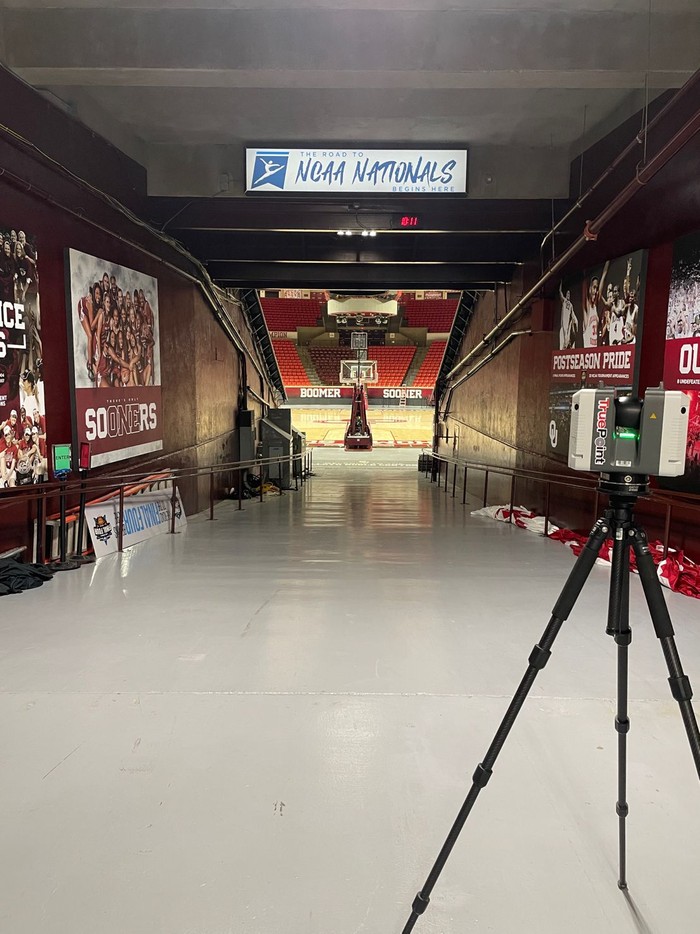
The University of Oklahoma men’s and women’s basketball teams was adding a new LED video display over the top of the player’s entrance tunnel.
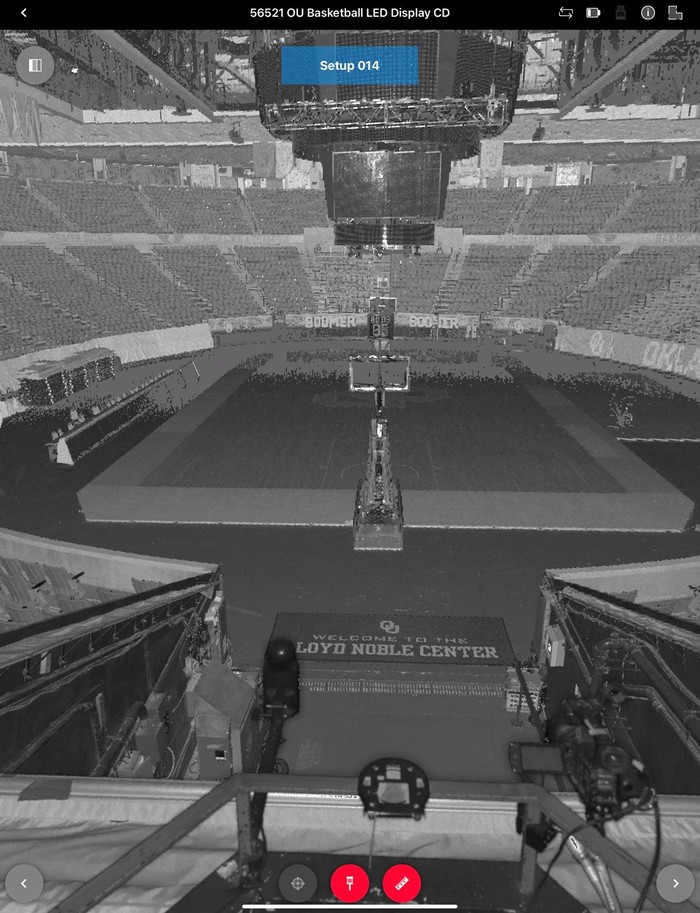
3D point clouds were completed in less than two minutes per scan location.
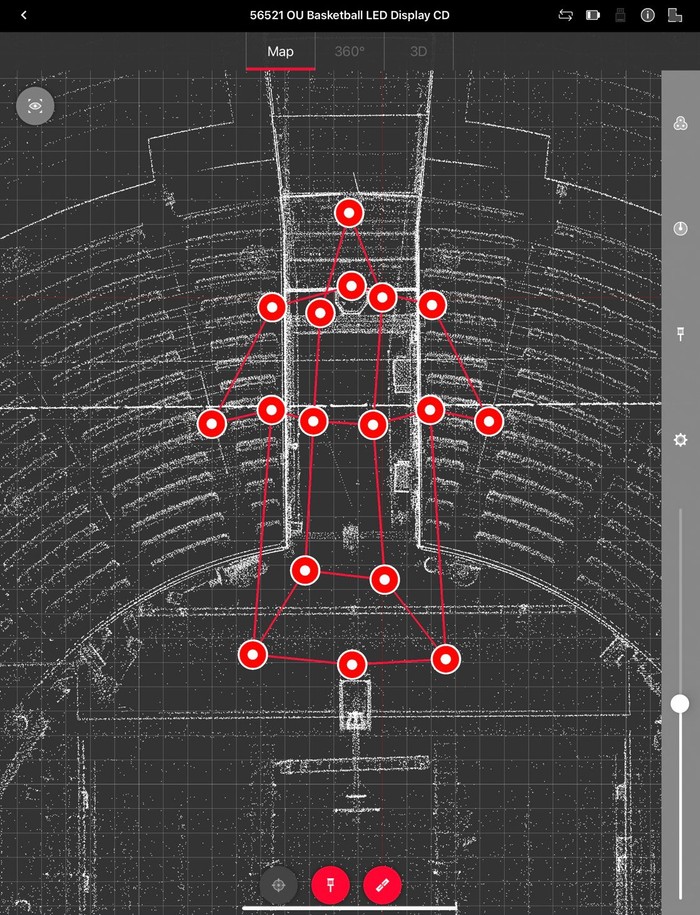
Site plan of scan locations surrounding the player’s entrance tunnel.
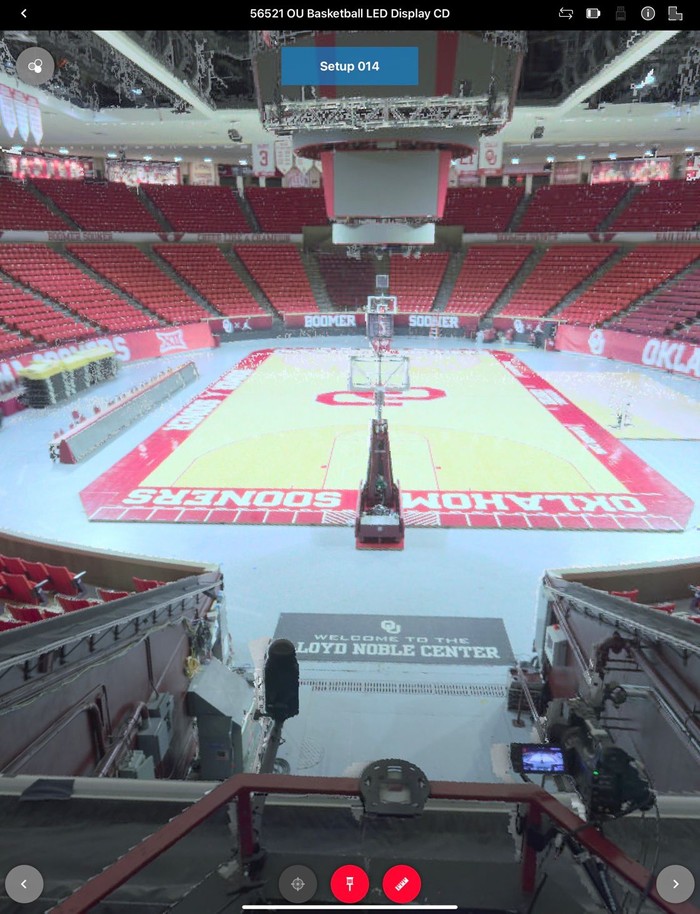
Point cloud data is accurate within millimeters, and can be processed into custom 2D CAD drawings and 3D BIM models at any level of detail.
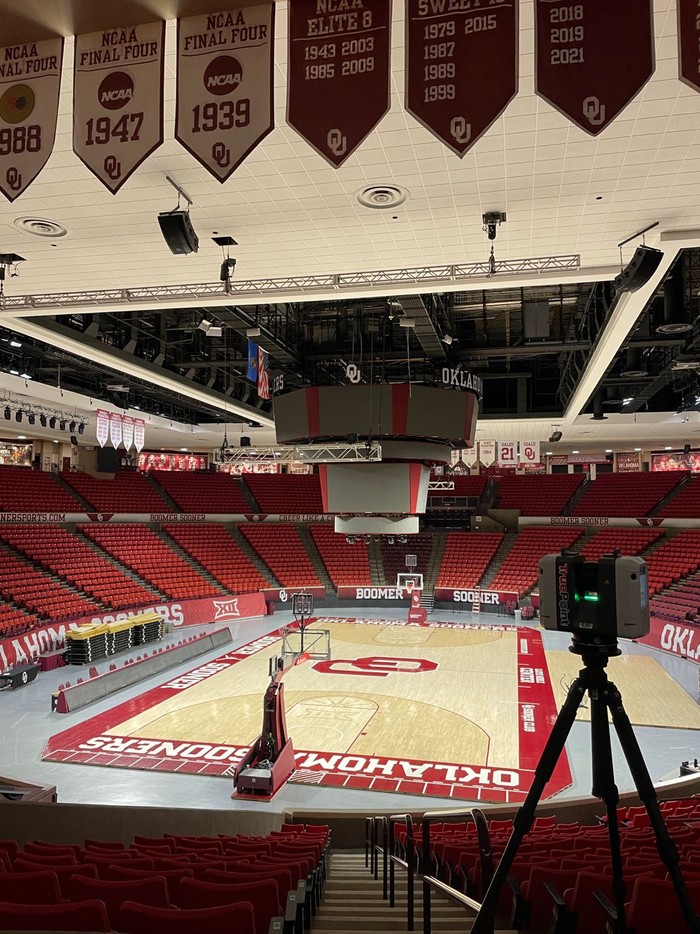
GPRS delivers accurate data to facilitate successful design planning and installation of your project.
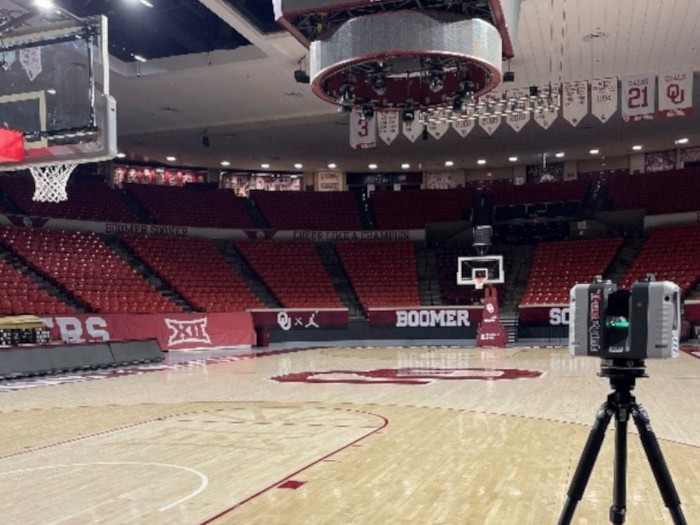
The Leica RTC 360 laser scanner was used on site for high-speed data capture.
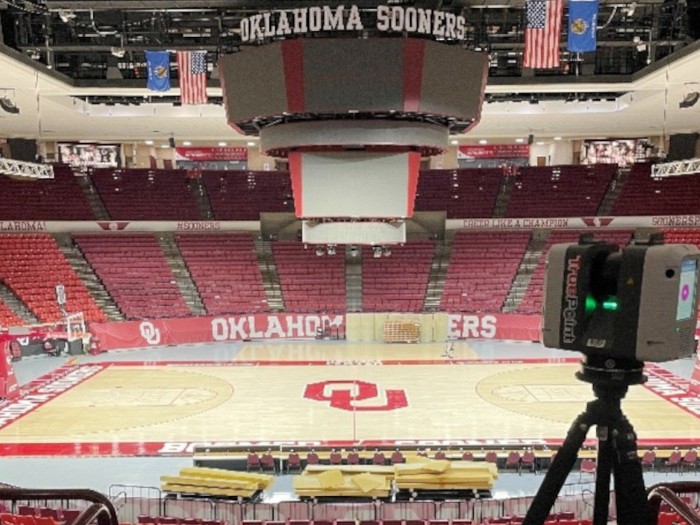
The Lloyd Noble Center was planning to improve the aging facility.
